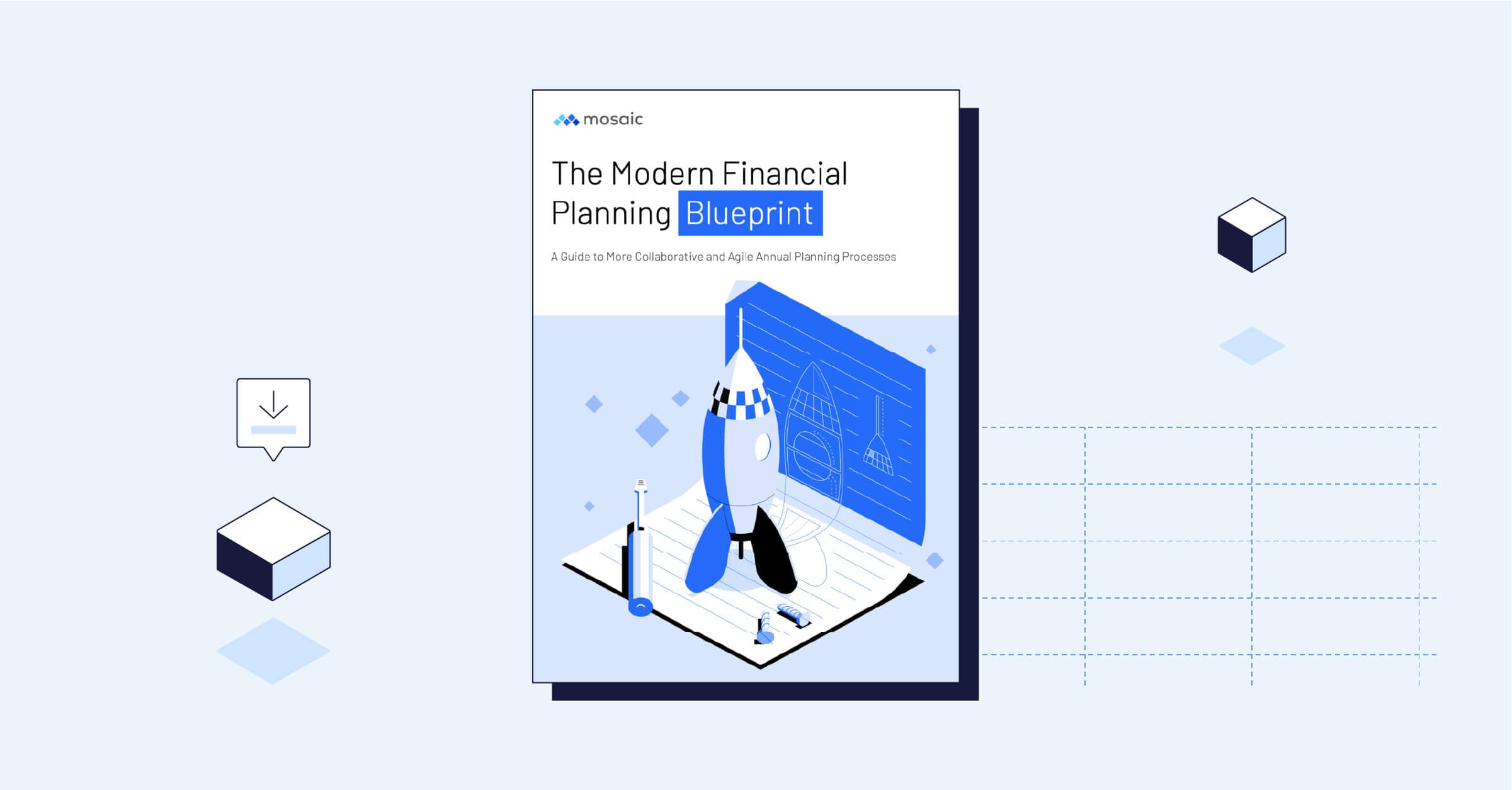In today’s world, the role of the modern Chief Financial Officer (CFO) extends beyond that of a traditional financial steward. McKinsey’s research has found that “…the CFO’s role is rapidly evolving—expanding in scope, requiring new capabilities, and demanding greater collaboration with C-suite peers.”
As a CFO, you sit at the table as a strategic partner, in a unique position to offer your perspective on all aspects of the business. Yet, despite this potential, you and your team often find yourselves merely sharing retrospective reports rather than using data to guide the company’s future proactively.
The key to transforming into a truly strategic financial partner lies in outcome-based reporting, which enables real-time budgeting and planning.
Table of Contents
What is Outcome-Based Reporting?
Outcome-based reporting is a financial reporting system grounded in intentional outcomes. Meaning, it’s a philosophy driven by the purpose of your measurements and the outcomes you seek. Once that’s established, focus on the reports and financial metrics that monitor, measure, and help ensure those specific outcomes are achieved.
How is this unique? Traditional methods, such as budget comparisons, depend mainly on static, annual planning processes — these don’t keep up with the rapid evolution of typical businesses. Instead, outcome-based reporting facilitates agile collaboration between finance and other functions, allowing you to be involved in various aspects of the company.
When done well, outcome-based reports can align an organization around crucial operational metrics and help finance surface strategic insights that drive greater performance and growth.
How to Build Outcome-Based Reports Step-by-Step
To create effective outcome-based reports, you need to continuously focus on financial impact. So, each planning process starts with one primary question: what is the most important thing we should measure or report on? The answer will help you identify three to five critical key performance indicators (KPIs) for your report.
While the process sounds pretty straightforward, finance teams often go wrong by attempting to do everything all at once, diluting their focus. Instead, the most successful outcome-based reports avoid overcomplication and unnecessary details — they are targeted and prioritize deeper analysis.
Begin with Cash Flow and Profitability
Effective reports should zero in on what really matters: cash flow analysis and profitability. Think of these as your guiding stars, as they are core indicators of a company’s financial health. By focusing on these metrics, you’re setting yourself up to make smart, data-driven, and timely decisions that propel the business forward.
Get The 2024 Financial Planning Blueprint

For instance, imagine a report showing whether you’re hitting your profit goals. Thanks to this information, you’re suddenly asking (and answering) important questions:
- Do you have the right number of people working on this? If your headcount and salaries are going up, you may have to increase prices to keep up.
- What clients are actually good for your bottom line? If a customer doesn’t pay consistently or on time, maybe they’re not the right customer for your sales team or your business.
- Which subscription tiers are driving the most revenue? If one of your pricing tiers or service offerings are more popular, you may want to adjust how much of your marketing budget goes to that specific offering.
- Are you overpaying suppliers? If that’s why you’re missing your target, maybe it’s time to raise prices.
Unlike traditional budget comparisons that check if you’ve stuck to a budget, this type of outcome-based report helps you dig into real issues that affect your business daily. In short, it’s about keeping your finger on the pulse of your business’s financial health and steering it toward tangible business results.
By aligning on the operational metrics that drive cash flow and profitability, you’re constantly surfacing insights that can inform strategic business decisions.
Dive Deep Into How the Business Makes Money
To understand the drivers of profitability and cash flow, you need to step back and look at your business’s fundamental money-making process. It’s not enough to have a superficial understanding — that won’t give you the rich insights you need. Instead, dive deep into your business model, including customer and product journeys, and everything in between.
Remember, your goal isn’t perfect financial modeling — that’s unrealistic. Once you understand what you’re selling, who you’re selling it to, and how, you can better identify the metrics that matter most to your business.
Revenue Side
Although you don’t need to become a technical product expert, you need to understand various revenue components to create insightful outcome-based reports.
So, how can you understand your company’s revenue? To start, know how your business bills customers and the specifics of what’s being sold, whether it’s software, physical products, services, or a combination. More importantly, grasp the nuances of your offerings, including usage models and upsell opportunities.
For example, let’s say you’re selling software that charges based on seats, and there is an annual subscription that you charge once per year. Maybe finance should be monitoring seat usage to get those deep insights.
So, if an account has 10 seats but only 5 are actively used, the customer will unlikely renew all 10 seats the following year. By tracking seat activity, finance can proactively identify and address renewal risks through the customer success team.
While seat usage isn’t traditionally a financial metric, focusing on it can help anticipate renewals, leading to better forecasting and potentially higher renewal rates through a strategic partnership with the renewal team.
Expense Side
Once you grasp the revenue aspects, pay attention to the costs inherent in your business model. By that, we don’t mean just looking at your gross and net margins but understanding exactly what goes into selling your product.
So, consider the entire ecosystem involved in selling your product, which includes understanding the production process, the systems in place, the teams dedicated to support and sales, the sales cycle itself, and your marketing strategies.
That said, it’s easy to get lost in the weeds here. Remember that you’re looking for a clear picture, not a pixel-perfect one. So, focus on gathering enough data to generate reasonably accurate plans and reports — not the granular details.
What matters is that every team’s efforts are pulling in the right direction, boosting your company’s cash flow and profitability.
Combine Revenue and Expenses Together to Answer Strategic Business Questions
Integrating financial insights with sales, marketing, and product operations transforms finance into a central hub that translates activities into financial terms. i.e., revenue and expense.
This way, finance can actively question and contribute to outcome-based discussions such as:
- Are sales teams offering products not on the product roadmap or too far down the roadmap, making them undeliverable after the customer signs the contract? For finance, this translates to uncollectible sales and churn
- Are the marketing team’s campaigns creating a lead funnel that drives sales efficiency? This directly impacts finance’s forecasts for new business
- Is the product roadmap aligned with the marketing campaign timing? Also, are there guardrails to delay a campaign if there is a delay in product launch?
At first blush, these questions may seem outside the realm of finance. However, all these questions (and answers) influence revenue and expense timing and amount. This knowledge lets your team create accurate forecasts and put themselves on the path to becoming strategic business partners.
4 Principles for Effective Outcome-Based Reporting
Agile planning and outcome-based reports hinge on pinpointing the metrics crucial to your business’s financial success. That’s why it’s so challenging—maintaining targeted focus requires consistent discipline.
However, certain basic principles and best practices can enhance CFOs’ ability to transition to this value-add approach to planning and reporting.
1. Have a “Good Enough” Mindset
While total accuracy is essential for legal and compliance purposes in accounting, for finance’s outcome-based planning, being directionally correct with your insights is more important. So don’t spend all your time aiming for perfection — focus on strategic alignment instead.
2. Make Event-Based Decisions
Event-based decision-making involves adjusting your financial plan based on the results from outcome-based reports. When constructing a financial plan, you typically predict a specific revenue target and allocate budgets accordingly.
However, if revenue hits only 50% of that target, you must revise your spending plans and create new assumptions. In this regard, an event-based approach lends greater agility and flexibility to your reporting style.
3. Find the Right Level of Granularity and Timeliness of Data
Finance doesn’t have to monitor every business metric continuously. CFOs who effectively use outcome-based reports understand the balance between granular data analysis and, when broader, delayed indicators get the job done.
For instance, you don’t need real-time travel and expense data updates. However, if you’re significantly investing in new technology, tracking the implementation is crucial to identify and quickly address any issues that could hurt ROI.
4. Prioritize Collaborative Relationships
Cross-functional buy-in and accountability are the hardest parts of outcome reporting and real-time planning. However, prioritizing collaboration can help finance seem more like a strategic business partner than the ominous figure that hammers departments with the numbers.
When you build trust with each department, getting the data you need to fuel effective reporting becomes easier. More importantly, with that data collection, you’ll be able to empower others across the business to succeed in their roles.
Mosaic: The Ultimate Outcome-Based Reporting Tool
Finance shouldn’t just be seen as the number-crunching department. It’s about guiding strategic business decisions and moving the company closer to its goals, keeping profitability in mind.
For your team to truly act as strategic business partners, understanding financial metrics and accessing insights exactly when you need them is crucial. That’s where Mosaic comes in. Mosaic is a Strategic Finance Platform that brings the power of real-time insights right to your fingertips directly from your integrated source systems.
When you link your systems to Mosaic, you’re not just getting a stream of data. You’re gaining instant access to the essential financial and customer success metrics that really matter. You can dive deep into the details, understanding the “why” behind the numbers. Want to tailor metrics to your needs? Our highly customizable Metric Builder is here to help.
But it’s not just about numbers. Convert these metrics into visually appealing financial reporting dashboards for clear and compelling financial storytelling. Share these insights across departments, with the narrative and metrics tailored to each audience. For a peek into Mosaic’s dashboards, check out the financial dashboard examples.
Want to see Mosaic in action? Request a demo today.
Outcome-Based Reporting FAQs
What is the difference between an outcome-based reporting approach vs. traditional reporting?
An outcome-based reporting philosophy in finance focuses on the results or impact of business activities, such as profitability, cash flow, return on investment, or value generation. The emphasis is on the effectiveness of financial strategies in helping achieve broader business goals.
Traditional financial reporting, however, focuses on documenting financial status and transactions, such as revenues, expenses, assets, and liabilities, often without directly linking them to strategic outcomes or long-term objectives. Typically, it’s static and provides a historical view of financial performance, primarily for compliance and record-keeping.
Does Mosaic do outcome-based reporting?
What are some examples of outcome-based reporting?
Own the of your business.

